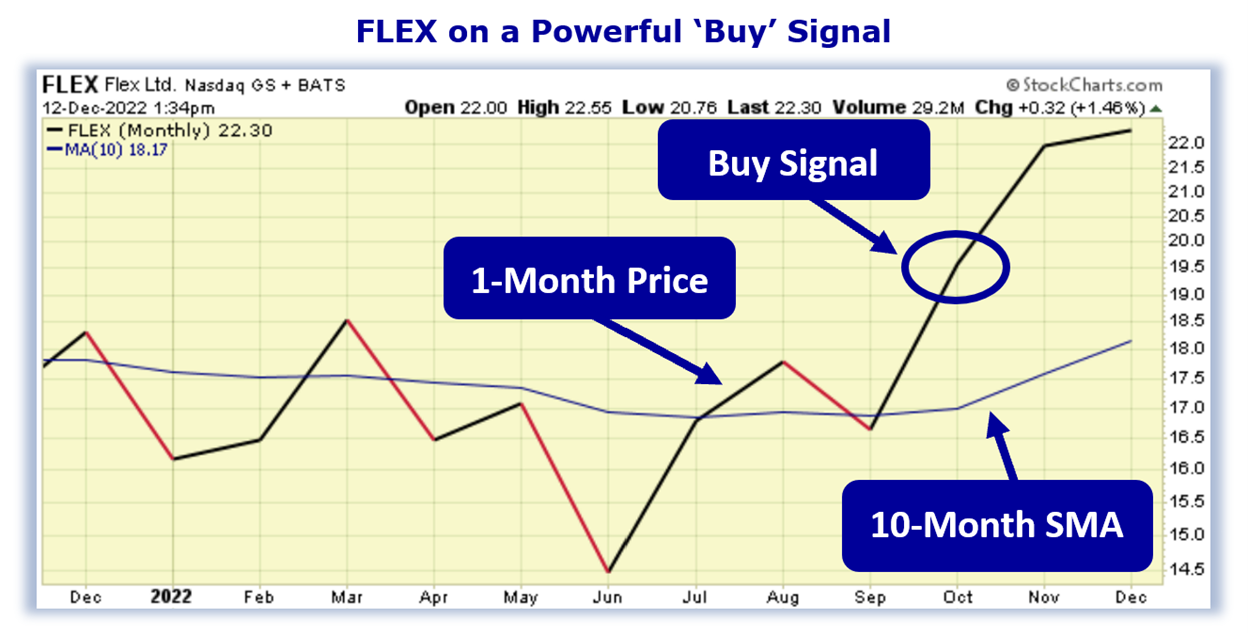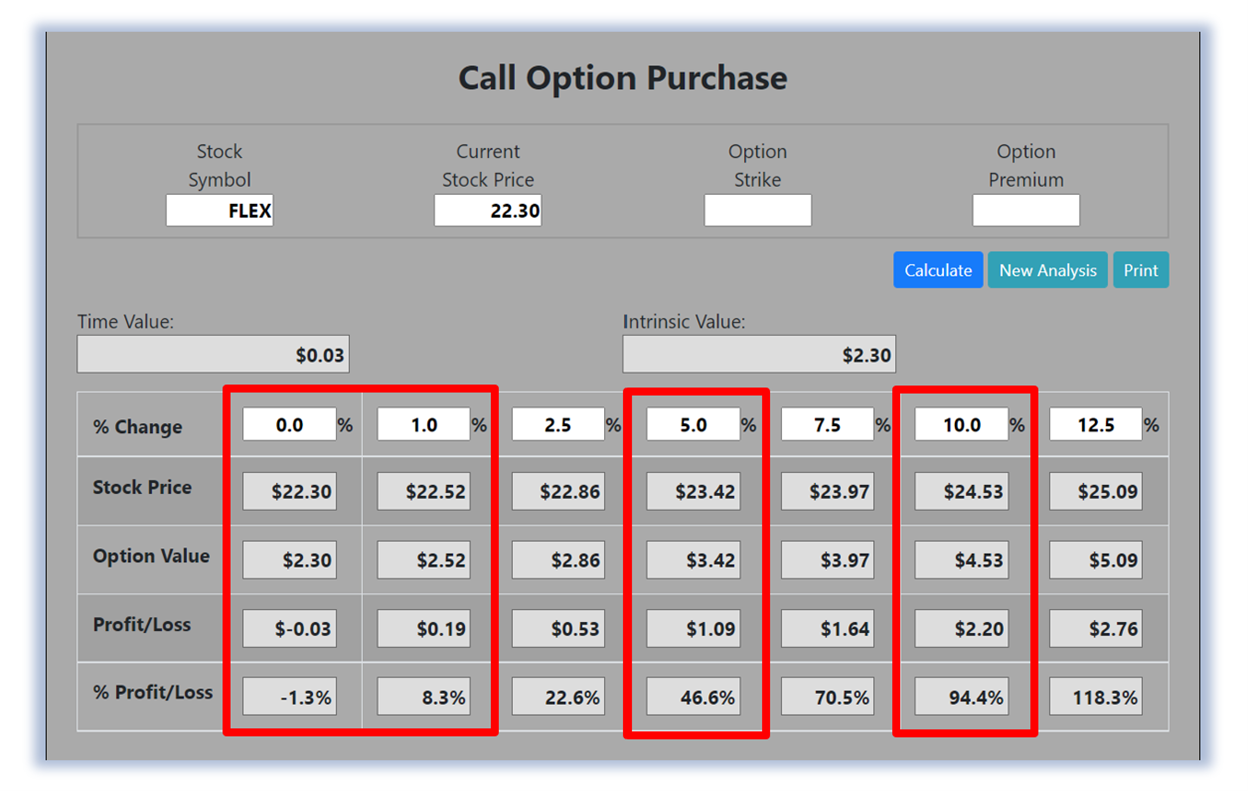For today’s Trade of the Day we will be looking at a monthly chart for Flex Ltd. (FLEX), states Chuck Hughes of TradeWinsDaily.
Before breaking down FLEX’s monthly chart let’s first review what products and services the company offers. Flex Ltd. provides design, engineering, manufacturing, and supply chain services and solutions to original equipment manufacturers in Asia, the Americas, and Europe. It operates through three segments: Flex Agility Solutions (FAS), Flex Reliability Solutions (FRS), and Nextracker. The company provides cross-industry technologies, including human-machine interface, internet of things platforms, power, sensor fusion, and smart audio.
Now, let’s begin to break down the monthly chart for FLEX stock. Below is a 10-month simple moving average chart for Flex Ltd.

Buy FLEX Stock
As the chart shows, in October, the FLEX 1-month price, crossed above the 10-month simple moving average (SMA). This crossover indicated the buying pressure for FLEX stock exceeded the selling pressure. For this kind of crossover to occur, a stock has to be in a strong bullish uptrend.
Now, as you can see, the 1-month price is still above the 10-month SMA. That means the bullish trend is still in play! As long as the 1-month price remains above the 10-month SMA, the stock is more likely to keep trading at new highs and should be purchased. Our initial price target for FLEX is 23.50 per share.
94.4% Profit Potential for FLEX Option
Now, since FLEX’s 1-month price is trading above the 10-month SMA this means the stock’s bullish rally will likely continue. Let’s use the Hughes Optioneering calculator to look at the potential returns for a FLEX call option purchase.
The Call Option Calculator will calculate the profit/loss potential for a call option trade based on the price change of the underlying stock/ETF at option expiration in this example from a flat FLEX price to a 12.5% increase.
The Optioneering Team uses the 1% Rule to select an option strike price with a higher percentage of winning trades. In the following FLEX option example, we used the 1% Rule to select the FLEX option strike price but out of fairness to our paid option service subscribers we don’t list the strike price used in the profit/loss calculation.
Trade with Higher Accuracy
When you use the 1% Rule to select a FLEX in-the-money option strike price, FLEX stock only has to increase 1% for the option to breakeven and start profiting! Remember, if you purchase an at-the-money or out-of-the-money call option and the underlying stock closes flat at option expiration it will result in a 100% loss for your option trade! In this example, if FLEX stock is flat at 22.30 at option expiration, it will only result in a 1.3% loss for the FLEX option compared to a 100% loss for an at-the-money or out-of-the-money call option.
Using the 1% Rule to select an option strike price can result in a higher percentage of winning trades compared to at-the-money or out-of-the-money call options. This higher accuracy can give you the discipline needed to become a successful option trader and can help avoid 100% losses when trading options.
The goal of this example is to demonstrate the powerful profit potential available from trading options compared to stocks. The prices and returns represented below were calculated based on the current stock and option pricing for FLEX on 12/12/2022 before commissions.
When you purchase a call option, there is no limit on the profit potential of the call if the underlying stock continues to move up in price. For this specific call option, the calculator analysis below reveals if FLEX stock increases 5.0% at option expiration to 23.42 (circled), the call option would make 46.6% before commission.
If FLEX stock increases 10.0% at option expiration to 24.53 (circled), the call option would make 94.4% before commission and outperform the stock return nearly 10 to 1. The leverage provided by call options allows you to maximize potential returns on bullish stocks.





















